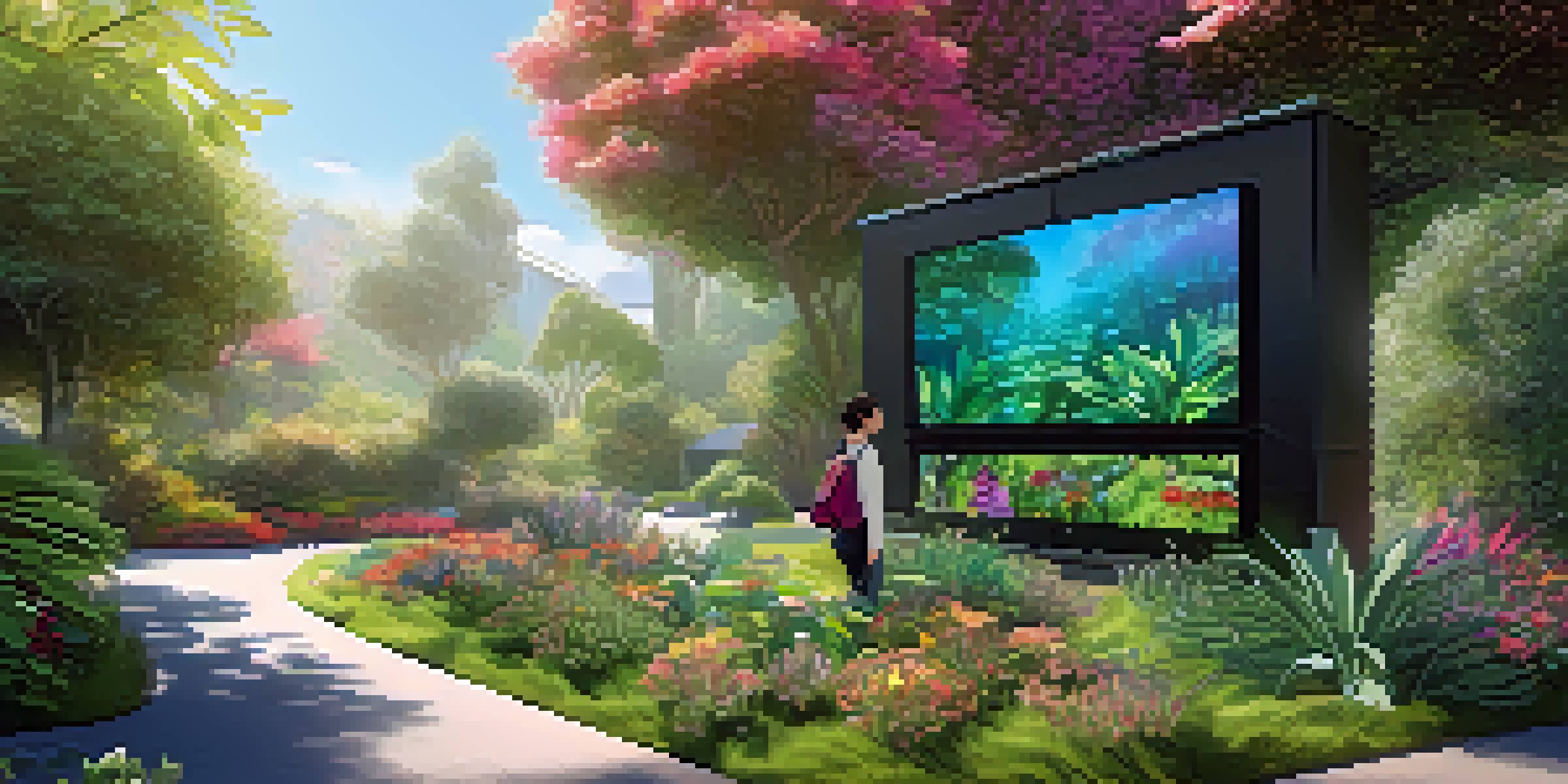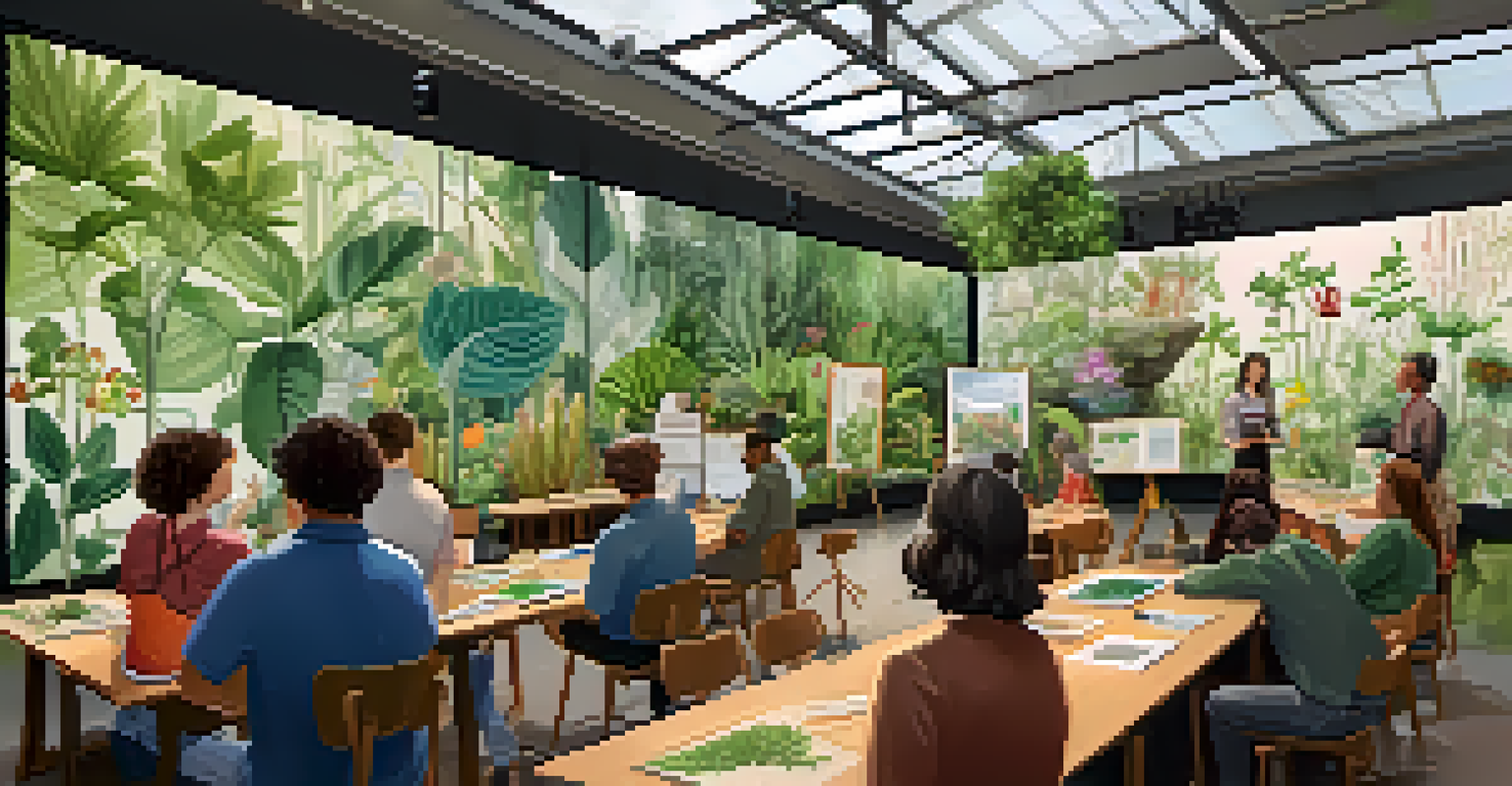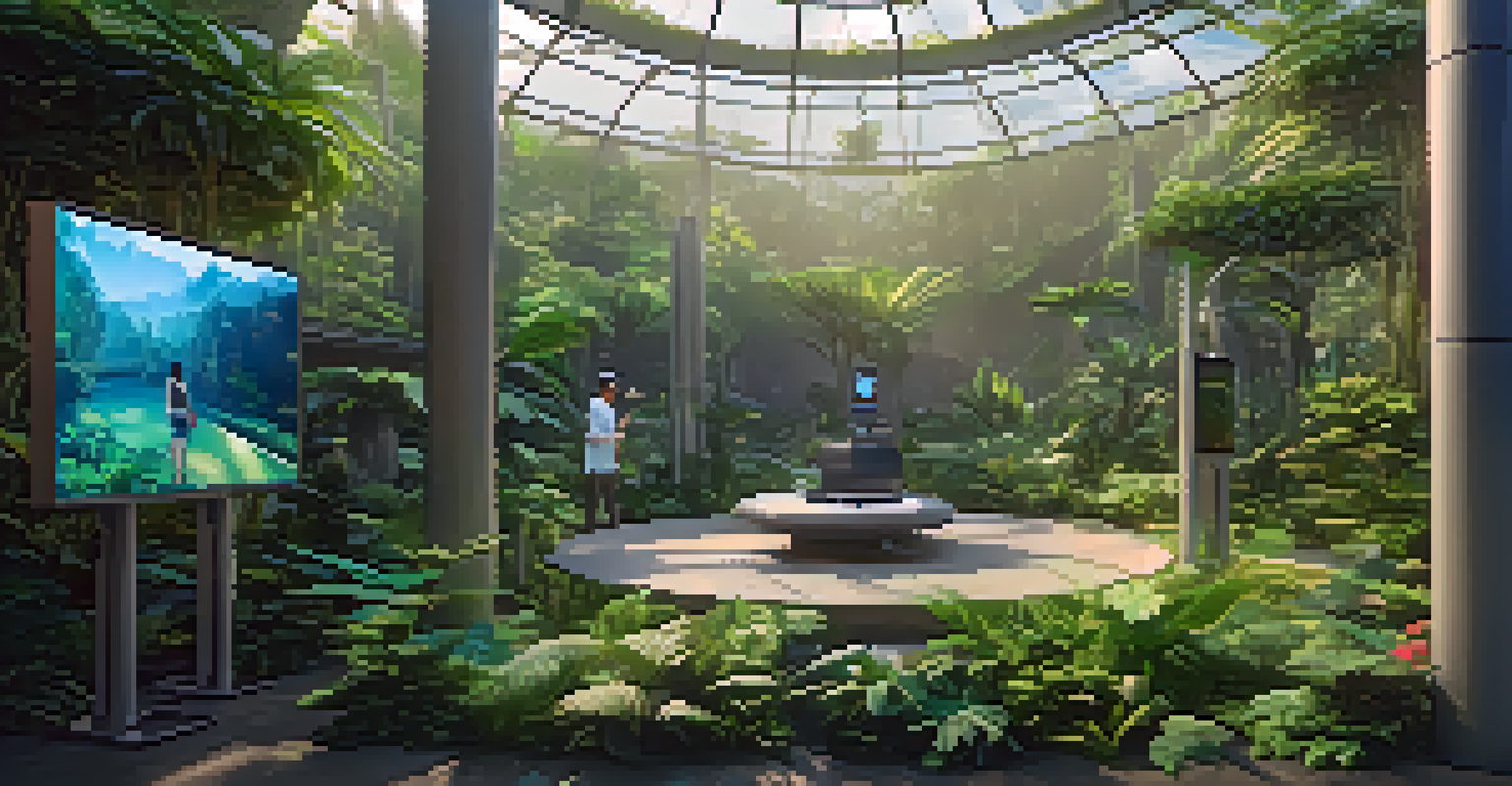Integrating Technology in Botanical Gardens for Educational Purposes

The Role of Botanical Gardens in Education
Botanical gardens have long been a treasure trove of knowledge, providing a serene setting for learning about plants and ecosystems. These living museums not only showcase biodiversity but also serve as educational platforms for visitors of all ages. By integrating technology, botanical gardens can transform the way they educate the public, making learning interactive and engaging.
The greatest threat to our planet is the belief that someone else will save it.
For instance, guided tours enhanced with augmented reality can bring the flora to life, allowing visitors to see 3D models of plants and their habitats. This innovative approach helps to deepen understanding and appreciation of plant life, making each visit memorable. Additionally, educational programs can utilize digital platforms to reach wider audiences, breaking geographical barriers and fostering a global community of plant enthusiasts.
Overall, the integration of technology in botanical gardens enhances their educational role, turning them into dynamic spaces for discovery. As these gardens evolve, they can continue to inspire future generations to value and protect our natural world.
Interactive Displays and Virtual Tours
Interactive displays are a fantastic way to captivate visitors by encouraging them to engage directly with the content. Imagine a touchscreen display where you can learn about different plant species, their uses, and ecological significance—all at your fingertips. This hands-on approach not only makes learning fun but also caters to various learning styles, from visual to kinesthetic.

Moreover, virtual tours offer an accessible way for people unable to visit in person. With just a click, anyone can explore the garden's vast collections from the comfort of their home. These virtual experiences can include immersive 360-degree views, narrated stories, and even live-streamed events, making it feel like you’re walking through the garden.
Tech Enhances Botanical Education
By integrating technology, botanical gardens transform learning experiences, making them interactive and engaging for visitors.
Such technological advancements ensure that botanical gardens reach a broader audience, promoting inclusivity in education. By combining physical and virtual experiences, gardens can engage and inspire a diverse group of learners.
Mobile Apps for On-the-Go Learning
Mobile apps are rapidly becoming essential tools for enhancing visitor experience in botanical gardens. With features like plant identification tools and educational quizzes, these apps can turn a stroll through the garden into an interactive learning adventure. Users can point their smartphones at a plant and instantly receive information about its origin, care tips, and ecological role.
Technology is best when it brings people together.
Additionally, mobile apps can offer personalized experiences by tracking visitors’ interests and suggesting pathways or exhibits that might intrigue them. This tailored approach allows for deeper engagement and encourages users to explore areas they may not have considered otherwise. It also fosters a sense of curiosity and exploration, vital for any educational setting.
Furthermore, integrating gamification elements, like rewards for completing certain tasks or learning modules, can motivate visitors to engage more actively with the content. As technology continues to evolve, so too will the possibilities for education in botanical gardens.
Using Drones for Research and Education
Drones are not just for aerial photography; they are revolutionizing the way we conduct research in botanical gardens. These flying devices can monitor plant health, map biodiversity, and even assist in conservation efforts. By showcasing the practical applications of drone technology, gardens can educate visitors about the importance of research and conservation.
For educational purposes, live drone demonstrations can capture the imagination of visitors. Watching a drone fly over the garden, collecting data, or mapping areas can spark interest in technology, science, and environmental studies. This hands-on experience can make the subject matter more relatable and exciting for learners of all ages.
Mobile Apps Foster Engagement
Mobile applications provide personalized learning experiences, allowing visitors to explore plant information and enhance their educational journey.
Incorporating drone technology into educational programs can also highlight the significance of modern tools in addressing environmental challenges. By showing how technology and nature can work hand-in-hand, botanical gardens can inspire future generations to pursue careers in science, technology, and conservation.
Enhancing Workshops with Technology
Workshops in botanical gardens can be significantly enhanced through the use of technology. For instance, using projectors to display live feeds from the garden allows participants to see demonstrations up close, no matter where they are seated. This technology not only improves visibility but also creates a more engaging learning environment.
Additionally, incorporating online platforms for pre-workshop materials or follow-up discussions can extend the learning experience beyond the physical space. Participants can access videos, readings, and discussion forums that complement the hands-on activities they experienced in the garden. This approach fosters a sense of community and encourages deeper exploration of botanical topics.
By blending traditional learning methods with modern technology, workshops can cater to diverse audiences and learning preferences. This flexibility ensures that everyone leaves with a richer understanding of the topics covered.
The Importance of Sustainability Education
Sustainability is a pressing global issue, and botanical gardens are perfectly positioned to educate visitors on this critical topic. By integrating technology, gardens can showcase sustainable practices in real-time, demonstrating how technology can support environmental stewardship. For example, smart irrigation systems can be monitored and explained through interactive displays, highlighting water conservation methods.
Educational programs can also utilize virtual reality experiences to immerse visitors in various ecosystems, illustrating the impact of human activities on the environment. By experiencing these simulations, participants can better understand the importance of sustainability in their own lives. This experiential learning fosters a deeper connection to the environment, motivating individuals to take action.
Sustainability Education is Key
Botanical gardens play a crucial role in promoting sustainability, using technology to educate visitors about environmental stewardship.
Ultimately, equipping botanical gardens with technology enhances their role as educators in sustainability. By empowering visitors with knowledge and tools, gardens can inspire a collective effort towards a greener future.
Collaborations with Technology Companies
Collaborating with technology companies can be a game-changer for botanical gardens looking to enhance their educational offerings. These partnerships can lead to innovative solutions, such as developing custom apps or interactive installations tailored to the garden's unique features. Such collaborations can also provide access to cutting-edge technology that may otherwise be out of reach.
For example, a botanical garden could partner with a local tech startup to create an augmented reality experience that allows visitors to interact with historical plant data or conservation efforts. This not only enriches the visitor experience but also fosters a sense of community between the tech and environmental sectors. By blending expertise, both parties can achieve greater impact.

Moreover, showcasing these collaborations can attract attention and funding, further supporting the garden’s mission. As technology continues to evolve, fostering these partnerships will be essential for botanical gardens to remain relevant and effective in their educational roles.